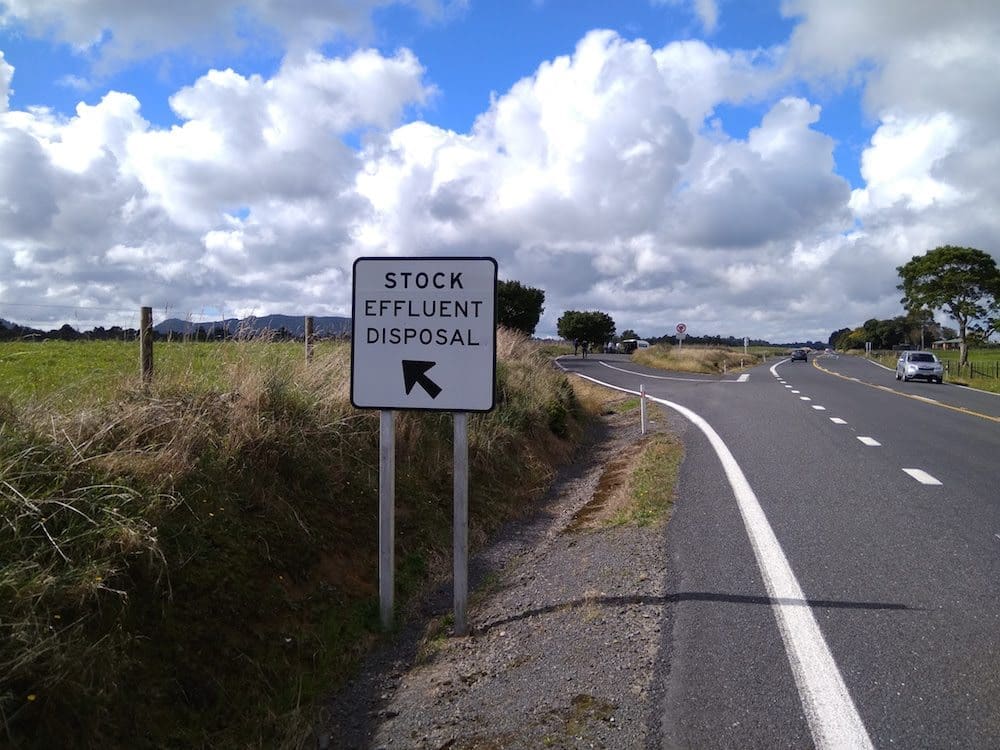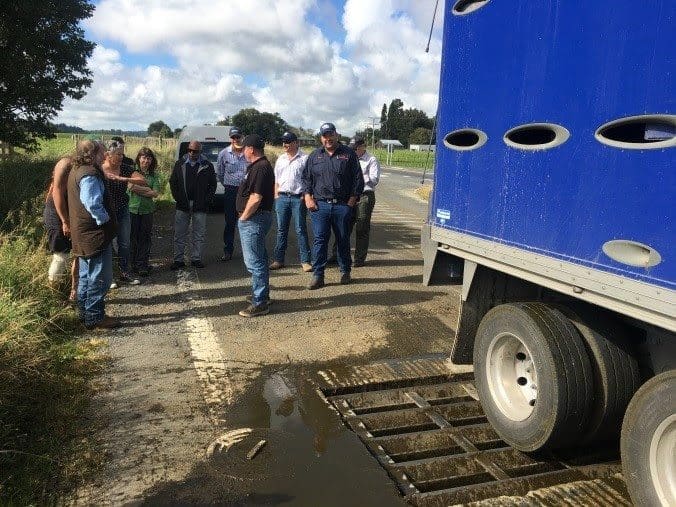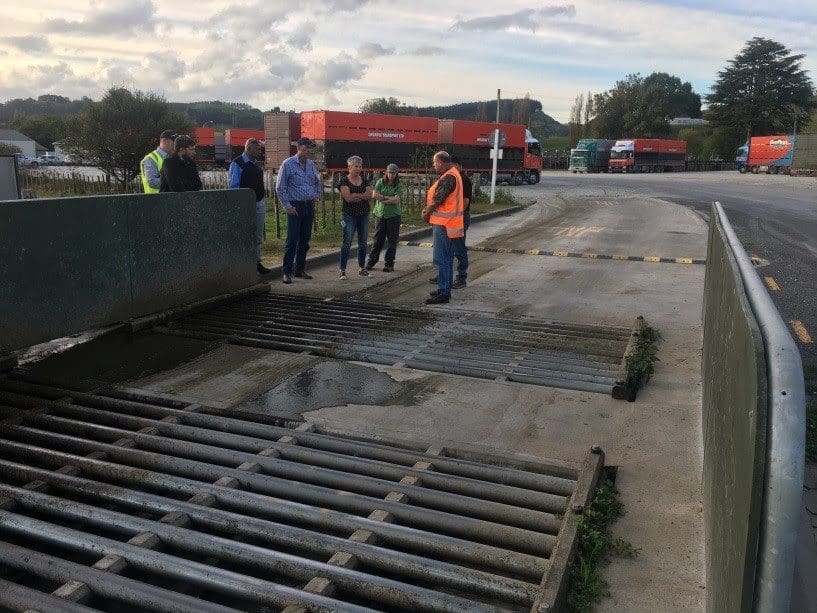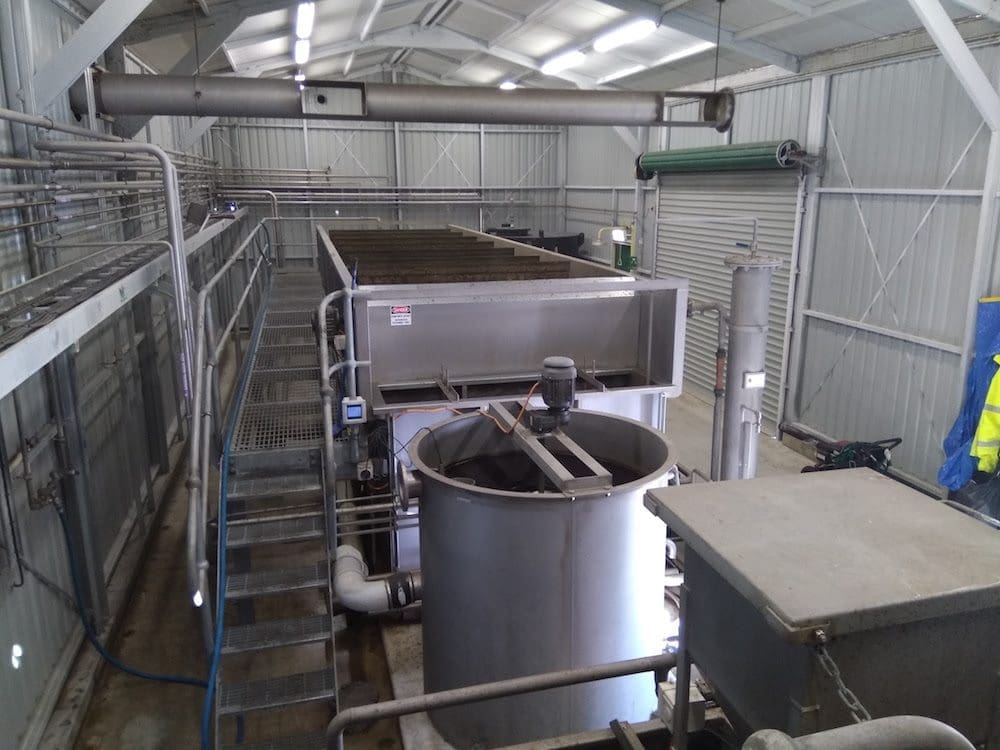MOVES to establish a network of strategically placed stock truck effluent dumps around Australia and to implement other effluent management strategies, both on-and off-farm, are set to grow following a recent livestock transporters tour of New Zealand.
Effluent spillage from livestock trucks is an increasingly serious issue in Australia, and was a hot topic of discussion at the national Australian Livestock and Rural Transporters Association (ALRTA) conference earlier this year (see our earlier report)
New Zealand is well ahead of Australia when it comes to managing effluent from stock transport, with many roadside disposal facilities and other strategies already in place.
A group of ALRTA representatives travelled to New Zealand in late April to see what they could learn from the NZ experience.
The delegation visited numerous facilities and spoke with many major players, and took a quantum leap forward in its understanding of how to establish and maintain effluent management facilities, ALRTA CEO Mathew Munro said.
A recent ALRTA newsletter written by Mr Munro and transporter Mick Debenham documented findings from the tour, which form the basis of the remainder of this article.
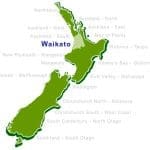 Mr Munro pointed out that the tour was focused specifically on the Waikato region (south of Auckland on the North Island), an ideal location to study because it is a ‘worst case scenario’ as far as livestock effluent production is concerned.
Mr Munro pointed out that the tour was focused specifically on the Waikato region (south of Auckland on the North Island), an ideal location to study because it is a ‘worst case scenario’ as far as livestock effluent production is concerned.
The Waikato is one of the premier dairy regions in the world. Land values can be as high as $100,00 per hectare in prime areas. Mr Munro noted “the grass is always a lush green and the trucks and sale yards are full of dairy cattle.”
The Waikato Regional Council has the most advanced effluent strategy in NZ, with one ‘in transit’ roadside effluent disposal facility already operational, 10 more on the drawing board, co-operative funding of several ‘end of trip’ effluent disposal facilities and a broad-scale levy in place to fund the effluent strategy across ten constituent district councils.
The ALRTA delegation chats with a driver who has called into the Tapapa Stock Truck Effluent disposal site to empty his tanks with 48 large Friesian cows on board.
What the group saw:
- Truck wash and treatment facilities, including one at Pukekohe which uses a screen to separate the solids and a settlement pond for the liquid which was then irrigated onto pasture
- Dairy farms using a ‘weeping wall’ to remove the solids from the dairy and feed pad effluent before the liquid runs into a lined dam where it is ultimate used to irrigate pasture
- A truck unloading area and wash/dump point at an abattoir, which includes Greenlea, a sophisticated processing plant to remove solids from effluent waste before the liquid is sent to town sewerage
- the New Zealand Transport Agency (NZTA) where the group learned how much roadside effluent dumps cost and the funding arrangements between the NZTA and local councils
- Saleyard truck washes and dump points
- Road side dump points
- A vermiculture facility that mixes various solid wastes before it is spread onto the ground in windrows for the worms to work their magic and convert it to vermi-caste, which is then sold as a soil renovator that has been shown to improve the yield of maize crops by up to 20 percent.
Te Kuiti saleyard and Stock Truck Effluent disposal site with two grates for trailers that have two tanks.
What the delegation learned:
The entire supply chain in NZ takes effluent management more seriously than in Australia: Effluent in NZ is generally considered to be a road safety, environment and amenity issue, Mr Munro said. Action to manage effluent in NZ is being driven by government, whereas in Australia, the transport sector is driving the issue. Mr Debenham also noted that Maori culture protects the streams and as such there is a strong political, social and regulatory desire to ensure this happens. As a consequence containment of stock effluent is already ingrained into society. It was also observed that dairy farms all appear to have systems in place to contain effluent and spread it onto pasture at suitable times of the year as both liquid and solids.
Three basic types of facility are used in NZ:
Most disposal facilities capture effluent, separate solids, discharge liquid and periodically physically remove accumulated solids.
The three types of facility identified were:
Lowest cost: Physical capture and piped to a containment tank. There is no onsite treatment and captured effluent is occasionally pumped out and taken away.
Medium Cost: As above but with some level of on-site biological treatment. This works well on high volume farms (e.g. weeping wall with large capture dam and onsite irrigation).
High Cost: Chemical and mechanical treatment in a fully-enclosed controlled environment (e.g. shed with negative air pressure). This process can use sulfuric acid, polymer, caustic soda plus mechanical separation and compression techniques.
Disposal of Liquids: NZ authorities apply significant charges (based on volume and concentration) to accept discharged liquids as ‘trade waste’ into the sewage system and there are large penalties if contaminated liquids flow or leach into natural waterways – so there is a strong incentive to either evaporate, irrigate on site, or apply active treatments that reduce the effluent content of liquids as much as possible before discharge. At Greenlea Abattoir, $1.2m was spent on a chemical processing plant to avoid an estimated $1m annual cost of trade waste disposal.
Disposal of Solids: Solids need to be periodically removed from the accumulation site. Slurries can be pumped into tanks while drier substances can be excavated. Off-site disposal can involve landfill, spreading, mixing with fertilizer, composting and vermiculture (worm farms).
Rules on emptying trailer tanks: Containment tanks are not mandatory. Even so, vehicles are prohibited from having a switch inside the cabin to operate containment tank valves. The idea is that drivers cannot empty tanks conveniently from a moving vehicle or at unmanaged sites. The driver is required to position the outflow over a grate and then exit the vehicle to check the alignment before discharge. “In our observations however, most trailers have tanks and these can be operated from inside the vehicle,” Mr Munro said.
Cost of construction: This is highly dependent on a number of factors. Mr Munro said the lowest cost facility the group encountered was just $20,000 (extension on a pre-existing truckwash). At the other end of the scale, a fully enclosed chemical treatment plant cost around $1 million. On the roadside, the biggest costs relate to the road infrastructure (turning lanes etc) and land purchase. “Generally, a decent on-farm or road-side facility will cost $250k – $500k (plus road infrastructure and land purchase where necessary) with a further $30k in annual maintenance costs.” Mr Munro said.
In-transit Facilities in NZ: The next 10 roadside facilities in Waikato will involve a dumping grate, piped to a tank which is emptied via a pump to tanker for offsite disposal as required. Initially, it was thought that containment dams would be used but the cost of lining large dams to prevent leaching in accordance with new rules has proven prohibitive. Lessons are constantly being learned concerning the finer details of the design. For example, existing grates need to be widened or side splash boards added to prevent effluent escape on site. Also, due regard needs to be paid for the likely direction being travelled by a laden vehicle to avoid turning across traffic. “We saw some great innovations such as automatic flushing when vehicles exit the site”.
Funding: The NZ Transport Authority (NZTA) has responsibility for funding 100pc of road infrastructure and signage. NZTA will contribute 50% towards other construction costs and maintenance. Waikato Regional Council contributes the other 50% which is raised via a levy on all rate payers. Private facilities are privately funded. Waikato Regional Council is prepared to offer financial incentives to make private facilities publicly available.
Permits and Controls: The responsibility for planning, building, environmental and cultural controls for effluent facilities largely rests with the NZ regional councils. Just like in Australia, farmers and operators report that approvals are complex, costly, uncertain and different in each region, Mr Munro said.
Curfews: While the NZ industry code of practice stipulates a target of 75pc of livestock being curfewed prior to transport, ‘on the ground’ opinions vary wildly. Processors reckon it is around 90pc while Drivers and operators will tell you it is actually below 10pc.
Road Transport Laws: Transport operators generally cannot be infringed when effluent falls from a loaded vehicle. However, penalties do apply for inappropriate discharge from containment tanks or if effluent falls from an unladen vehicle. “While NZ does have ‘chain of responsibility’ laws, these are not applied to persons preparing animals for transport – and hence there is no legal responsibility motivating a change of practice in this area. As a general rule, entities accepting the delivery of livestock should also accept the delivery of effluent – but this is not always the case in practice”.
Enforcement: On road enforcement of load restraint is rare. However, Waikato Regional Council is very active in enforcing laws designed to prevent effluent from entering waterways.
Establishing new facilities: It takes many years to establish a new road side facility in NZ. Despite the strong political will to deliver, it still takes significant time to gather data, consult with stakeholders, survey/map potential sites, negotiate with land owners, navigate planning/environment rules, obtain funding, establish maintenance agreements and carry out construction. “Difficult, but not impossible!,” Mr Munro said.
Mr Debenham noted that New Zealand livestock carriers similar difficulties in getting stock prepared for transport as transporters do in Australia.
In terms of penalties for drivers, he explained that stock effluent in NZ is not considered part of the load when a vehicle has stock on board and as such carriers can’t be fined for a load restraint breech when loaded for an effluent spill, they can however be fined for a spill under environment protection legislation. However, it appears that this is rare as when a fine is challenged on the fact that no place to empty/dispose of the effluent was available the fine is withdrawn.
However, stock effluent is considered part of the load when a stock truck has no stock on-board.
Fully enclosed facility at Greenlea Abattoir.
Where to next?
Mr Munro said the ALRTA had taken a quantum leap forward in its understanding of how to establish and maintain effluent management facilities.
“We now have expert contacts, reference documents and practical knowledge acquired from seeing the NZ system in operation for ourselves.
“In consultation with our state associations, we are refining our national effluent strategy and building a business case to establish Australia’s first ‘in transit’ effluent disposal facility.
“While we have learned a lot, there are of course several important differences between Australia and New Zealand in terms of distances travelled, feeding regimes and political structure (NZ has no states).”
The ALRTA and its state associations would now work actively towards vastly improved effluent management in Australia involving all levels of government and the entire supply chain, and will consider next steps at its national council meeting on May 24.

